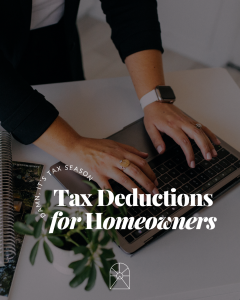
STEPHANIE HUNZIKER
REALTOR®, ABR, RENE
M: 425-241-8133
O: 425-392-6600
steph@stephsellsseattle.com
Whether helping a buyer find their dream home, or expertly guiding a seller through the listing process, since 2014, I’ve had the honor of assisting incredible families, first-time home buyers, investors, and those beginning their next chapter of life! It is truly an honor to be partnered with Windermere. With unwavering support from an amazing network, I strive to provide expertise, unmatched service, and comprehensive education to my clients.
What I love about the Pacific Northwest is the vast beauty that we get to experience each and every day. From the Puget Sound, to the Cascade Mountains, there is always something to marvel at and say “WOW, we get to live here!” #LoveYourPNWLife
Featured Properties
My Blog
5 Tax Deductions for Homeowners: Some You May Not Know!
*SIGH* It’s that time of year again: Tax Season. I’m dropping this Friday knowledge on you to give you something to ponder this weekend if you’re a current homeowner OR if you’re thinking about becoming one! Here are some tax deductions that you may not know about! Save this post for later or share it […]
Q4 2022 Western Washington Real Estate Market Update
The following analysis of select counties of the Western Washington real estate market is provided by Windermere Real Estate Chief Economist Matthew Gardner. I hope that this information may assist you with making better-informed real estate decisions. For further information about the housing market in your area, please don’t hesitate to contact me! Regional Economic […]
Sunday Inspection Thoughts
Spent this morning at the inspection for my wonderful clients who are moving here from out-of-state and putting down roots in the PNW! I am so excited for them to be able to take advantage of favorable market conditions and have a new home and a new state for the new year. If long-term home […]




